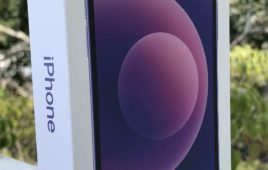Leap Wireless International is leaving the room and Cricket Communications is officially taking over in both brand and company name. But that doesn’t mean Leap, or rather Cricket, is leaving its legacy in the dust.
That’s the message from Al Moschner, executive vice president and COO, who has been meeting with media to make sure Cricket is getting its story across since it unveiled a series of new plans at its 2010 Analyst Day earlier this month. That same day, Aug. 3, the company-to-be-formally-known as Leap released disappointing second-quarter results, which overshadowed much of what the company was trying to get across by way of new strategies.
Analysts weren’t too sympathetic. Bernstein Research analyst Craig Moffett, in particular, boiled down the most “confounding element of Leap’s new strategy” as its wholesale relationship with Sprint. Cricket will act as a facilities-based provider in markets where it does own network assets and as an MVNO in areas where it does not. “Leap’s low-cost/low-priced urban ethnic formula appears to have been tossed aside in favor of an all things to all segments approach,” Moffett wrote at the time.
Moschner says Cricket is not walking away from the people who made the company what it is today. Ethnic and low-income customers remain an important part of the company’s demographic. “We are broadening our appeal,” he says. “What we can now do is expand that to anyone who is concerned about value.”
The economy isn’t the only reason postpaid customers are moving over to prepaid. Previous barriers, like not being able to offer national coverage, are going away, and straightforward pricing – with taxes and fees included in the base package – is the name of the game.
As for trying to be too many things for too many people, Moschner says the company started in 1999 with a simple idea and executives wanted to be a disruptive force in a market that was complacent. Leap introduced innovations over the years, like unlimited voice at $29.99, and now it’s simply adding more features and functions than it had before. The company’s intent is not to compete head-on with Verizon Wireless and AT&T, but to be a value leader. And if that sounds a lot like what T-Mobile USA offers, Moschner points out that Cricket is not getting into postpaid at all; it’s a strictly prepaid shop.
The nationwide coverage means Cricket can gain with big-box retailers. It’s not that it wasn’t able to get into those retailers before – Cricket’s brand has been in those stores for a while now – but it wasn’t able to get the benefit of nationwide retailer marketing because it was limited to select markets. A big value of hooking up on a national basis is being able to take advantage of the marketing offered by those fliers and other collateral that get distributed nationwide.
Moschner says Cricket believes national retail will increasingly play a bigger role in how wireless is sold, but it is not moving away from its traditional local distributor/dealer network. On the contrary, its branded stores and premiere dealers account for a majority of the company’s volume and it will continue to nurture them. “We see the big box opportunity as one that’s accretive, it grows the pie for us,” reaching channels it otherwise wouldn’t reach.
Leap’s name change to Cricket will become effective after it goes through the Nasdaq renaming/relisting process.




